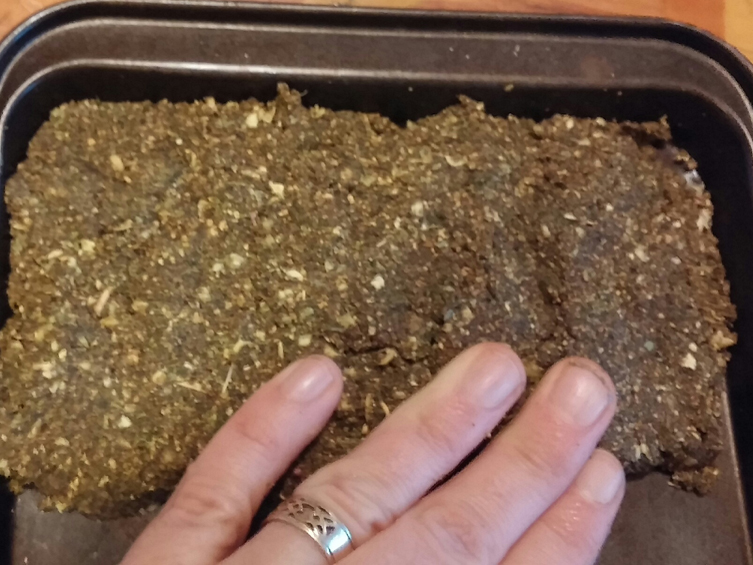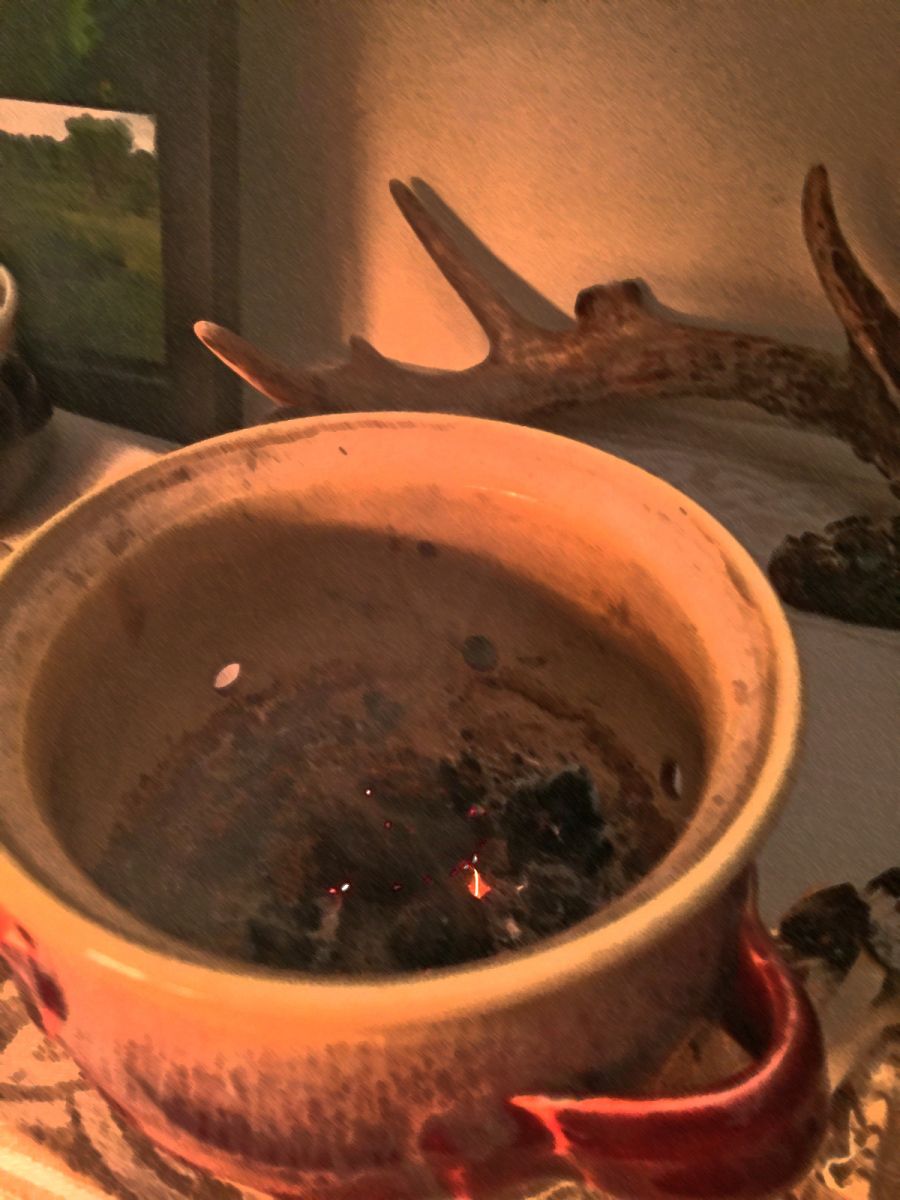Gathering Smoke~Making Incense From The Land
I recently made a new batch of kyphi style incense from ingredients that I gathered all year long in my bioregion. Kyphi is a type of incense, originating in ancient Egypt, that is made with honey, mead, or some other sweet liquid that is usually alcohol based. There are many Kyphi recipes and, the incense I make is simply derived from this general style that I adapted to my local plants and the consistency I prefer. I have posted my Kyphi recipe in the past, but on recently referring to it for my current batch, I realized that I have changed some things. I also didn't think it was "user friendly" enough. When I cook or concoct, I have a habit of not really measuring; a quality that drives my students crazy and I have been sincerely trying to change how I convey my recipes so that anyone can use them. This is one such attempt, however, I truly believe that, once you get the hang of any recipe, there is room for artful intuitiveness and I encourage everyone to find a comfortable balance between proper proportions and how they personally would like the incense to end up.
Many Kyphi recipes require that the dry and wet ingredients are mixed and left to steep and converge for a week or so. I have done this, as well as mixed the dry and wet ingredients both on the same day. Letting the separate mixtures set enables the scents to infuse into each other. I like both methods. I suggest you try both. The recipe below is my own personal choice of ingredients and my individual process. I use plants, resins, honeys, and elixirs in my incense that I've gathered or made all year long. I realize that not everyone is able to do this so, of course, some or all of these ingredients can be purchased, although there is a very special magic that occurs when we use what is locally available. This makes an unstandardized, non-generic, uniquely scented incense that wefts smoke, the sacred, people, and the land.
For those who are interested in using local plants and want to be prepared for the upcoming gathering season, I have made a list of what I collect and store through the season. Each year is a bit different based on what's abundant and what I happen to find during my regular herb harvesting walks. I have put the approximate flowering time for here in Central New York State, but it's different each year and in each place.
Flowers; gathered, dried, and stored
Hawthorne~May, I use the leaves too
Wild Roses(I use Rosa multiflora)~June
Mugwort(Artemisia vulgaris)~leaves and flowers, mid to late summer
Wild Cherry Blossoms~May
You can use any flower you'd like here; Lavender, Chamomile, other local scented blossoms
Roots;dug, washed, chopped, and stored
Elecampane (Inula helenium)~ Dug in the Spring
Angelica (Angelica atropurpurea L.)~Dug in the Spring. This is our local, native Angelica. Also know as purplestem Angelica.
I use both of these roots because of scent as well as their medicinal and sacred uses. Angelica is well known for it's use for protection and as a clearing/purifying plant, and Elecampane is a lung remedy that smells musky, resinous, and earthy.
Barks;scraped and dried
Yellow or Black Birch~Spring or Fall, Winter if I'm in a pinch
Conifer needles~ I gather these any time of year and use them fresh or dried
Pine and Balsam are my favorites
Cedar
Resinous buds; gathered,dried, and stored
Poplar~April-May
Tree Resins;Gathered any time of year but I prefer winter because they're not as soft and sticky as in summer
Please Note: tree resin is not the same as tree sap
I usually use Pine resin but any conifer resin will work. Please note that tree resin is not the same as sap. The resin occurs where the tree has been injured and is an effort for the tree to heal itself much like our bodies develop a scab or scar tissue. Please be careful to only gather the excess and loose resin so as not to further injure the tree.
Hawthorne Berries
Berries; can be used fresh, frozen and thawed, or dried
Hawthorne Berries~late August-early September
Elderberry-September
Rosehips-September-December
Honey/Mead/Elixir
I usually make a Wild Rose honey or elixir during the summer. Sometimes I'll also add some cordial that I've made. This time I used Hawthorne Berry cordial and Elecampane Root honey. In the past I've used locally made mead.
My Incense Recipe
Tools:
2 metal mixing bowls
baking sheet
coffee grinder
spoon and fork
parchment paper if desired for ease when removing incense from baking sheet
I suggest dedicating some tools to incense making because the resins can be really hard to scrub off. I have spoon, fork, a couple of bowls, and resin grinder. The resin grinder is just a coffee grinder. You can use the same grinder for flowers, buds, leaves, and barks as long as it's all going into the incense. I have two grinders, one for resin and one for leaves and flowers because I make teas and other products that I don't necessarily want to taste like Pine resin.
Step I
Mix Dry Ingredients(all ground in coffee grinder)
1/4 Cup of Resins~Pine, Spruce, Poplar bud
1/2 Cup of leaves and flowers
1/4 Cup of roots and barks
Set aside. At this time you can place this all in a glass jar to "mingle" for a week or just set aside to be mixed with the wet ingredients.
Step II
Mix Wet Ingredients
1/2 cup of dried berries ground to a powder or fresh (or frozen and thawed) and mashed
3/4-1 cup of mead, wine, honey, or herbal elixir or any combination of such
These can be put in a glass jar to "mingle" if desired. Otherwise proceed to the next step. If you decide to wait, go to Step III after about a week
Step III
Mix Dry and Wet Ingredients
This is where I start ad libbing. You should end up with a consistency that you can shape. I think of it as the same consistency as meatballs. It should hold together. If it doesn't, I'll add something so that it will. If it's too wet, add more dried ingredients, if it's too dry add more honey or mead.
Step IV
Spread onto a baking sheet so that it forms a layer about 1/2" thick.
Place in a place where it can dry. I put it above my woodstove but any warm, dry place will do.
Leave for about a week or until dried and hardened. Then it should break easily into chunks.
Burn either by using a charcoal incense burner or simply lighting it!








